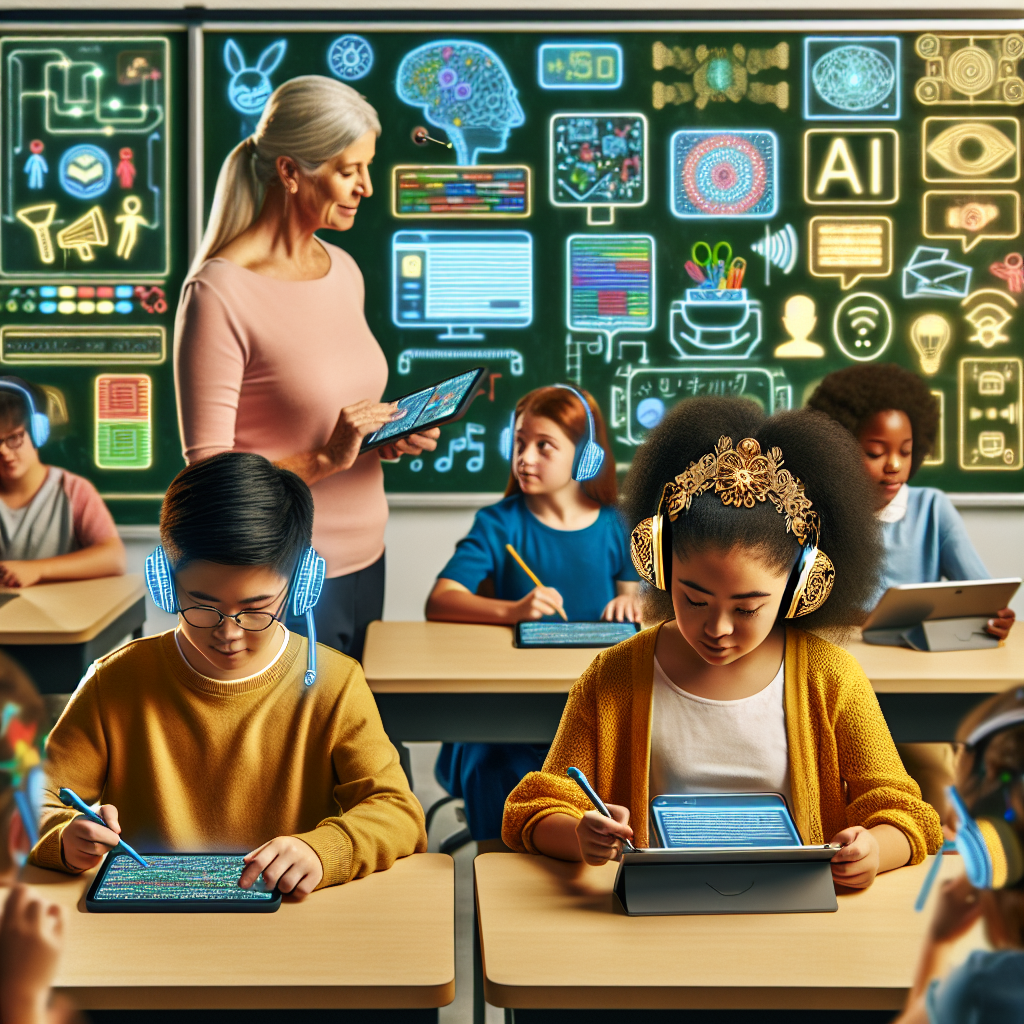The Role of AI in Special Education: Supporting Students with Disabilities
Artificial Intelligence (AI) is revolutionizing the field of education, particularly in the realm of special education. With the ability to analyze vast amounts of data, adapt to individual learning needs, and provide personalized support, AI has the potential to greatly enhance the educational experiences of students with disabilities. In this article, we will explore the role of AI in special education and how it can support students with disabilities.
1. Personalized Learning
One of the key benefits of AI in special education is its ability to provide personalized learning experiences for students with disabilities. AI algorithms can analyze a student’s strengths, weaknesses, and learning preferences to create customized learning pathways that cater to their individual needs. This can help students with disabilities to learn at their own pace and in a way that best suits their learning style.
For example, AI-powered educational platforms can adapt the difficulty of tasks based on a student’s performance, providing additional support or challenges as needed. This can help students with disabilities to stay engaged and motivated, as they are not overwhelmed by tasks that are too difficult or bored by tasks that are too easy.
2. Assistive Technology
AI-powered assistive technology is another area where AI is making a significant impact in special education. Assistive technology can help students with disabilities to overcome barriers to learning and communication, enabling them to participate more fully in educational activities.
For example, AI-powered speech recognition software can help students with speech or language disabilities to communicate more effectively. This technology can transcribe spoken language into written text, allowing students to participate in classroom discussions, take notes, and complete written assignments.
Similarly, AI-powered text-to-speech software can help students with visual impairments to access written materials. This technology can read aloud text from books, websites, and other sources, enabling students with visual impairments to engage with educational content in a way that is accessible to them.
3. Data Analysis
AI can also play a crucial role in data analysis in special education. By analyzing large amounts of data from various sources, AI algorithms can identify patterns and trends that can help educators to better understand the needs of students with disabilities and make informed decisions about their education.
For example, AI can analyze student performance data to identify areas where students are struggling and provide targeted interventions to support their learning. This can help educators to identify early warning signs of learning difficulties and provide timely support to help students overcome these challenges.
Additionally, AI can analyze data on student engagement and participation to identify factors that may be impacting a student’s ability to learn. This can help educators to make adjustments to their teaching strategies or classroom environment to better support students with disabilities.
FAQs
1. How can AI support students with disabilities in the classroom?
AI can support students with disabilities in the classroom by providing personalized learning experiences, assistive technology, and data analysis. AI algorithms can analyze a student’s strengths, weaknesses, and learning preferences to create customized learning pathways that cater to their individual needs. AI-powered assistive technology can help students with disabilities to overcome barriers to learning and communication, enabling them to participate more fully in educational activities. Additionally, AI can analyze data on student performance, engagement, and participation to identify areas where students are struggling and provide targeted interventions to support their learning.
2. What are some examples of AI-powered assistive technology for students with disabilities?
Some examples of AI-powered assistive technology for students with disabilities include speech recognition software, text-to-speech software, and predictive typing software. Speech recognition software can transcribe spoken language into written text, allowing students with speech or language disabilities to communicate more effectively. Text-to-speech software can read aloud text from books, websites, and other sources, enabling students with visual impairments to access written materials. Predictive typing software can help students with physical disabilities to type more efficiently by predicting the words they are trying to type and suggesting them as they type.
3. How can educators incorporate AI into their teaching practices to support students with disabilities?
Educators can incorporate AI into their teaching practices to support students with disabilities by using AI-powered educational platforms, assistive technology, and data analysis tools. AI-powered educational platforms can help educators to provide personalized learning experiences for students with disabilities by adapting the difficulty of tasks based on a student’s performance. Assistive technology can help educators to provide additional support to students with disabilities by using speech recognition software, text-to-speech software, and other tools to help students overcome barriers to learning and communication. Data analysis tools can help educators to identify areas where students are struggling and provide targeted interventions to support their learning.
In conclusion, AI has the potential to greatly enhance the educational experiences of students with disabilities by providing personalized learning experiences, assistive technology, and data analysis. By incorporating AI into their teaching practices, educators can better support students with disabilities and help them to succeed in the classroom. As AI continues to advance, it is likely that its role in special education will only continue to grow, providing new opportunities for students with disabilities to learn and thrive.

